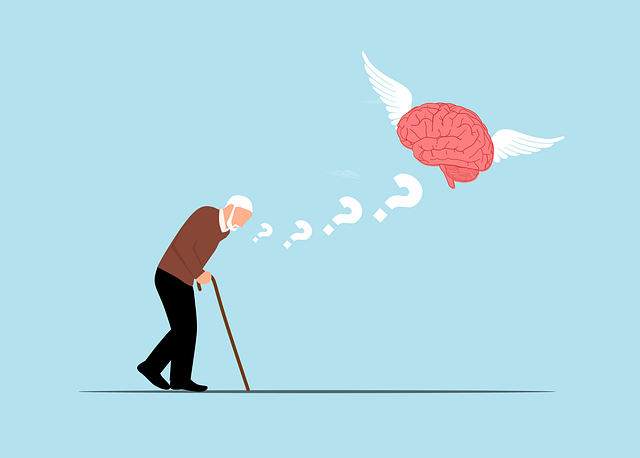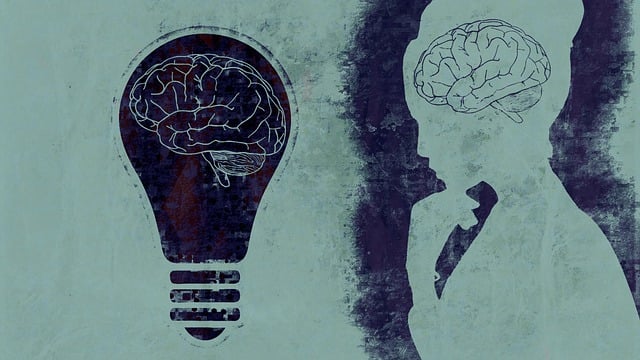Trauma significantly impacts emotional development in adolescent teens, leading to mental health issues like anxiety, depression, and substance abuse. Effective support includes tailored interventions such as cognitive behavioral therapy (CBT), eye movement desensitization and reprocessing (EMDR), and biofeedback techniques for stress management. Cultural sensitivity and initiatives like Stress Management Workshops are crucial. Biofeedback empowers teens to control physiological responses, fostering self-care practices and emotional regulation. Creating supportive environments through tailored services, including biofeedback and coping skill development, promotes healing and resilience. Integrating trauma-informed care in schools incorporates strategies like self-awareness exercises, emotional intelligence programs, and conflict resolution techniques, ensuring comprehensive support for affected teens. Community collaboration, integrating local organizations, schools, and healthcare facilities, offers tailored services like biofeedback therapy to address teen needs post-trauma, promoting long-term resilience and mental well-being.
“Trauma support services for adolescent teens are essential given the profound impact of traumatic experiences on their developing minds. This article delves into effective strategies for addressing this pressing issue, focusing on biofeedback as a complementary therapy for teens.
We explore the significance of creating supportive environments, integrating trauma-informed care in schools, and leveraging community resources to provide comprehensive support. By understanding trauma’s effects and implementing these approaches, we can enhance healing and foster resilient outcomes for young individuals.”
- Understanding Trauma and Its Impact on Adolescent Teens
- The Role of Biofeedback in Trauma Therapy for Teens
- Creating a Supportive Environment for Effective Treatment
- Strategies for Integrating Trauma-Informed Care in Schools
- Community Resources and Collaboration for Comprehensive Support
Understanding Trauma and Its Impact on Adolescent Teens

Trauma is a profound and complex experience that can significantly impact adolescent teens, shaping their emotional and psychological development. Understanding trauma involves recognizing its various forms, including acute events like accidents or assaults, as well as chronic stressors such as abuse, neglect, or living in poverty. Adolescent teens are particularly vulnerable to the long-term effects of trauma due to ongoing brain development, forming a crucial period where traumatic experiences can disrupt neural circuits and influence their ability to regulate emotions and cope with stress.
The impact of trauma on mental health is profound, leading to conditions like anxiety, depression, post-traumatic stress disorder (PTSD), and substance abuse. Providing effective support for adolescent teens requires tailored interventions that address these challenges. Therapy for adolescent teens, such as cognitive behavioral therapy (CBT) or eye movement desensitization and reprocessing (EMDR), can help them process traumatic memories and develop healthy coping strategies. Incorporating biofeedback techniques into treatment further enhances their ability to manage stress and regulate emotions. Cultural sensitivity in mental healthcare practice is essential, ensuring that support services are accessible and tailored to the diverse needs of adolescent teens from various backgrounds. Additionally, Stress Management Workshops Organization initiatives can empower teens with tools for self-care, while Mental Health Policy Analysis and Advocacy plays a vital role in shaping systems that prioritize trauma-informed care.
The Role of Biofeedback in Trauma Therapy for Teens

Biofeedback is emerging as a powerful tool within trauma therapy specifically tailored for adolescent teens. This non-invasive technique empowers young individuals to gain conscious control over their physiological responses, offering them a sense of agency in managing trauma-related symptoms. By learning to regulate heart rate, muscle tension, and skin conductance, teens can develop effective self-care practices that are crucial for their overall well-being.
Integrating biofeedback into therapy sessions provides a safe space for teens to explore and express their feelings while receiving real-time feedback on their bodily responses. This knowledge allows them to practice self-soothing techniques and incorporate them into their daily lives, fostering resilience and promoting better mental health. Moreover, community outreach program implementation featuring biofeedback workshops can enhance accessibility to these life-changing tools, encouraging teens to develop healthy self-care routines for long-term emotional well-being.
Creating a Supportive Environment for Effective Treatment

Creating a supportive environment is paramount for effective trauma support services, especially when targeting adolescent teens. This involves cultivating a safe, non-judgmental space where young individuals feel empowered to express their experiences and emotions freely. Through techniques such as therapy for adolescent teens, incorporating biofeedback and coping skills development, professionals can facilitate healing. By teaching positive thinking and anxiety relief strategies, these services equip teens with essential tools to navigate the challenges they face.
A nurturing atmosphere is key to encouraging open communication, which in turn allows for deeper exploration of trauma and its effects. This environment should be designed to promote resilience, helping each teen discover their inner strength while fostering a sense of belonging and understanding. Tailoring these support systems to meet individual needs ensures that every adolescent receives the care they require on their journey towards healing and recovery.
Strategies for Integrating Trauma-Informed Care in Schools

Integrating trauma-informed care into schools is a vital step toward creating supportive environments for adolescent teens who have experienced traumatic events. This approach recognizes that trauma can impact learning and behavior, and it aims to foster a safe and understanding atmosphere. Schools can employ various strategies to implement trauma-informed practices effectively. One such method is incorporating self-awareness exercises and emotional intelligence programs into the curriculum. These initiatives help students develop coping mechanisms and enhance their ability to regulate emotions, fostering resilience in the face of adversity.
Additionally, conflict resolution techniques can play a significant role in trauma support. By teaching adolescents constructive ways to manage and resolve conflicts, schools can create positive interactions and reduce potential triggers for traumatic responses. The use of biofeedback as a therapeutic tool is another innovative approach, enabling students to gain control over their physiological reactions to stress and anxiety. This combination of strategies ensures that trauma-affected teens receive holistic support, promoting not only their academic success but also their overall well-being.
Community Resources and Collaboration for Comprehensive Support

In providing comprehensive trauma support, community resources and collaboration play a pivotal role. Local organizations, schools, and healthcare facilities can work together to create a network that offers a range of services tailored to different needs. For adolescents and teens who have experienced trauma, this might include specialized therapy sessions such as biofeedback, which helps them learn to regulate their physiological responses to stressful situations. By integrating these resources seamlessly, communities can ensure that individuals receive holistic care, addressing not only the immediate impacts of trauma but also fostering long-term resilience.
Furthermore, designing mental health education programs and promoting positive thinking within these collaborations can prevent burnout among both support staff and the individuals they serve. These initiatives can equip adolescents with coping mechanisms, enhance their sense of agency, and contribute to a culture that prioritizes mental well-being. Such an inclusive approach not only supports trauma recovery but also fosters a supportive environment where everyone has access to resources and opportunities for growth.
Trauma support services for adolescent teens require a multifaceted approach, encompassing understanding trauma’s impact, utilizing innovative techniques like biofeedback in therapy, creating supportive environments, integrating trauma-informed care in schools, and leveraging community resources. By combining these strategies, we can ensure comprehensive and effective treatment for young individuals navigating the challenges of trauma, ultimately fostering their healing and resilience. Biofeedback, in particular, emerges as a powerful tool within this framework, offering promising avenues for recovery and improved mental well-being among adolescent teens.









